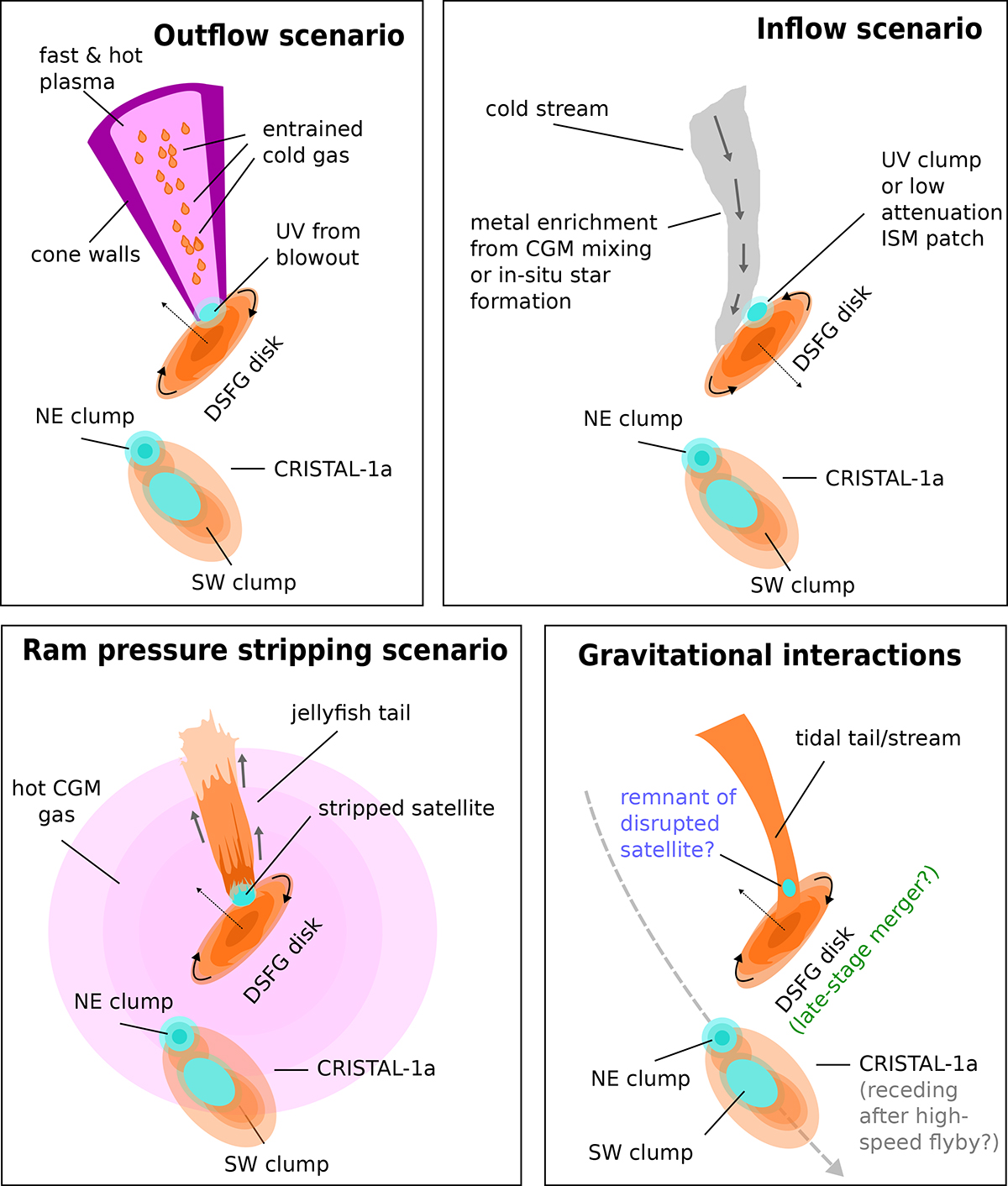Fig. 5.

Download original image
Cartoon representations of the four possible scenarios to explain the [C II] plume. In all panels the DSFG is depicted as an inclined rotating disk, with arrows showing the rotation. The spiral arms and the normal vector are only intended to show the orientation of the disk, although we cannot determine it from the data. Upper left: in the outflow scenario the extended [C II] emission arises from clumps of cold gas entrained within a large-scale, off-axis conical wind. Alternatively, [C II] could be tracing ionized gas in the cone walls. Here, the ISM at the launching site is blown out by the wind, allowing the escape of UV photons. Upper right: in the inflow scenario, a C+-bearing stream of gas falls from the north into the receding side of the disk. Here we depict the disk orientation inverted so that the inflow arrives in the near side of the disk. Lower left: in the ram pressure stripping scenario, the UV-bright clump in the DSFG is a satellite galaxy falling through a hot and dense halo around the system. Ram pressure stripping of the satellite’s ISM then produces the [C II] plume in the form of a “jellyfish” tail. Lower right: in the gravitational interactions scenario, the plume is a tidal tail from a past gravitational interaction between the DSFG and (possibly) CRISTAL-01a. This cartoon summarizes the three cases discussed in the main text: a high-speed flyby of CRISTAL-01a (gray), a late-stage major merger (green), and the tidal disruption of a minor satellite (purple). The dashed gray arrow qualitatively describes a possible orbit for CRISTAL-01a in the first case, that aligns with its morphological major axis.
Current usage metrics show cumulative count of Article Views (full-text article views including HTML views, PDF and ePub downloads, according to the available data) and Abstracts Views on Vision4Press platform.
Data correspond to usage on the plateform after 2015. The current usage metrics is available 48-96 hours after online publication and is updated daily on week days.
Initial download of the metrics may take a while.


